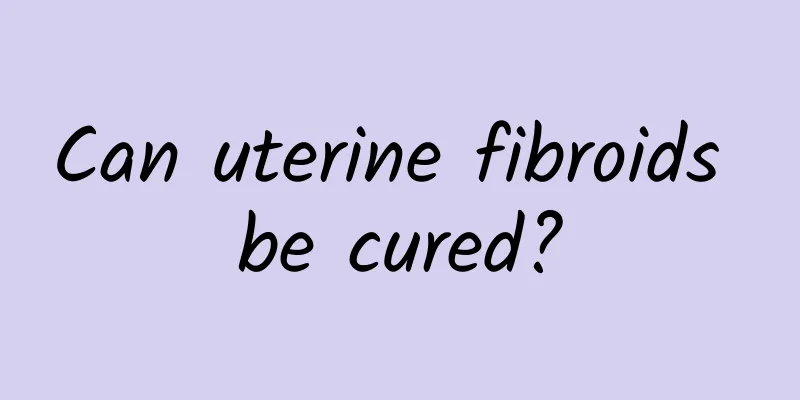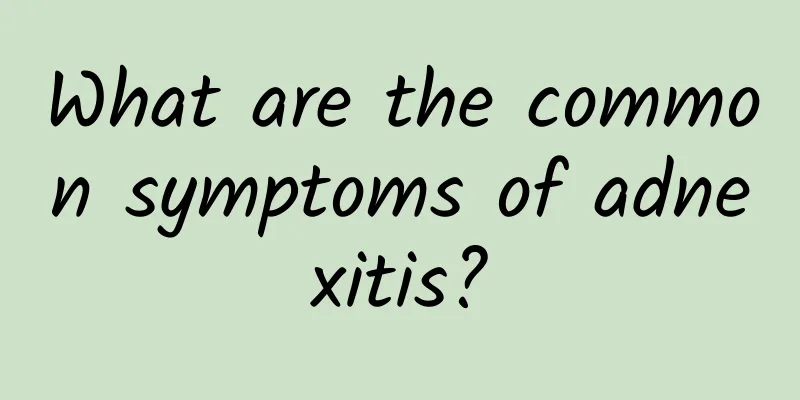Can uterine fibroids be cured?

|
Can uterine fibroids be cured? Uterine fibroids are the most common and mildest benign tumor among gynecological tumors. Many women have been troubled by it in life, but as long as active treatment is carried out and postoperative protective measures are taken, the disease can be completely cured. The following is a detailed introduction to the cure for uterine fibroids. 1. Drug treatment: Currently, the commonly used gonadotropin-releasing hormone agonists in clinical practice include leuprorelin, goserelin, triptorelin, etc. Gonadotropin-releasing hormone agonists should not be used for a long time and are only used for pretreatment before surgery, generally for 3 to 6 months, to avoid causing severe menopausal symptoms caused by low estrogen; small doses of estrogen can also be supplemented at the same time to counteract this side effect. Mifepristone is a progesterone antagonist. In recent years, it has been clinically tried to treat uterine fibroids. It can reduce the size of fibroids, but fibroids often grow again after stopping the drug. Tamoxifen can inhibit the growth of fibroids. However, long-term use may cause some patients to have uterine fibroids that grow larger, and even induce endometriosis and endometrial cancer. This should be paid attention to. 2. Surgical treatment: Surgical treatment of uterine fibroids includes myomectomy and hysterectomy, which can be performed through the abdomen or vagina, or endoscopic surgery (hysteroscopy or laparoscopy). The choice of surgical procedure and surgical approach depends on factors such as the patient's age, whether she has fertility requirements, the size and location of the fibroids, and medical technology conditions. (1) Myomectomy: A surgery to remove uterine fibroids while preserving the uterus. It is mainly used for young women under 40 who wish to retain their fertility. It is suitable for patients with larger fibroids, heavy menstruation, compression symptoms, infertility caused by fibroids, submucosal fibroids, and fibroids that grow rapidly but have not become malignant. (2) Hysterectomy: For patients with obvious symptoms, those with malignant fibroids, and those who do not want to have children, hysterectomy is recommended. Hysterectomy can be performed with total hysterectomy or subtotal hysterectomy. For older patients, total hysterectomy is preferred. The possibility of cervical malignancy must be excluded before surgery. 3. Focused ultrasound therapy: By focusing ultrasound waves, the temperature inside the tumor is raised to above 65°C, causing coagulative necrosis of the tumor, which plays a therapeutic role. The treatment can shrink the fibroids and relieve symptoms. It is suitable for symptomatic uterine fibroids. There is no surgical scar after treatment, and its advantage is fast recovery after surgery. Although uterine fibroids are a common benign tumor, the harm they cause cannot be ignored, especially for women of childbearing age. They must actively seek treatment because the disease can cause infertility or habitual abortion. Long-term menorrhagia or irregular vaginal bleeding can cause hemorrhagic anemia, which seriously threatens the patient's health. Therefore, active treatment is urgent. |
<<: Can massage cure irregular menstruation?
>>: What are the tests for uterine fibroids?
Recommend
Acute adnexitis troubles women
What are the symptoms of acute adnexitis? Many wo...
Abortion is no small matter, and you need to be aware of these three misunderstandings!
As young people's views on human nature becom...
The most important symptom of cervical erosion in women is increased vaginal discharge
Many female friends do not know much about the sy...
What could be the reason why my period hasn’t come for nearly half a month?
What could be the reason why my period hasn’t com...
Will women with cervical erosion bleed? What are the symptoms of cervical erosion in women?
There is no problem with mild cervical erosion, b...
What are the common types of vulvar leukoplakia?
Generally speaking, when we talk about vulvar leu...
What harm does irregular menstruation do to the body
Blood diseases, hypertension, liver diseases, end...
What is the cause of adnexitis?
What is the cause of adnexitis? Adnexitis may be ...
Which hospital is good for treating congenital absence of vagina?
Where is the best hospital for the treatment of c...
Women who often stay up late are prone to uterine fibroids
I believe everyone knows that we should maintain ...
Which hospital is good for endometrial thickening
Clinically, there are many treatment measures for...
Obese and tired even though you don’t eat high-calorie foods? Doctor Liu Boen: 4 tips for cleaning your body to lose weight easily
Every October to February of the following year i...
Why are women more likely to get uterine fibroids? Are depressed women more likely to get uterine fibroids?
People know little about the cause of uterine fib...
Three factors that affect the treatment of vulvar leukoplakia
Vulvar leukoplakia can have a huge impact on fema...
Can pelvic inflammatory disease cause peritonitis? Treat it early
Due to the special location of pelvic inflammator...









